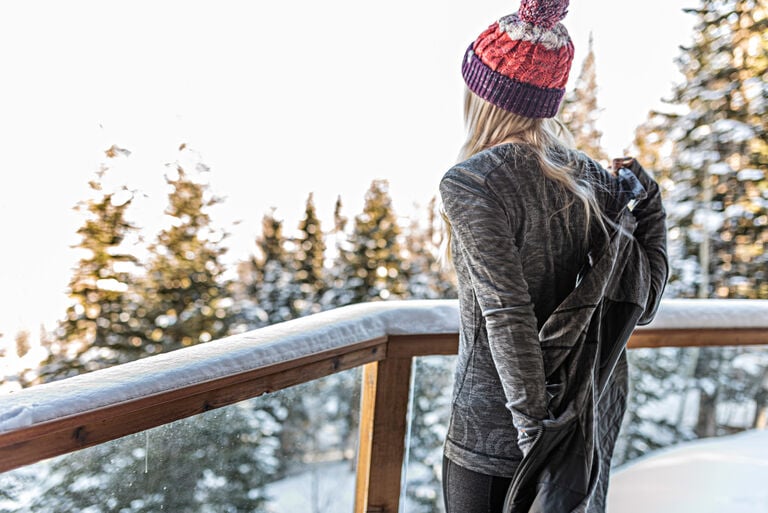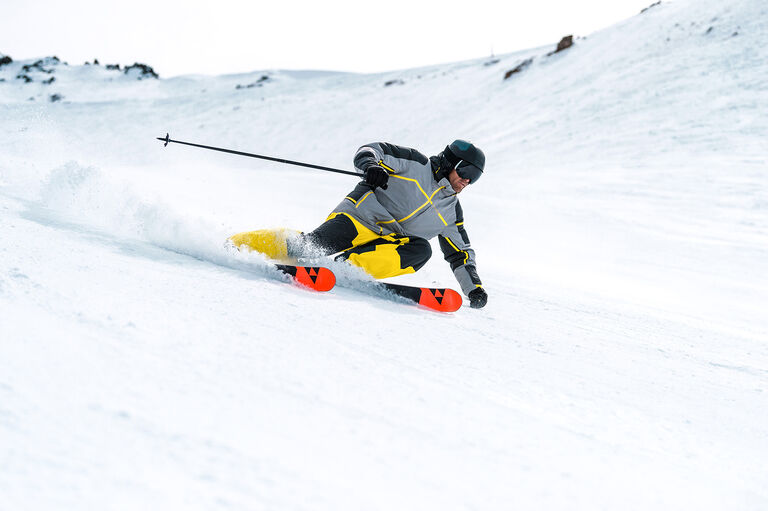
Christy Sports – Skiing & Snowboarding Clothing
How to Choose the Right Clothing for Skiing & Snowboarding
When you are out on the mountain, being exposed to the elements is part of the experience. Luckily, Christy Sports carries all the important clothing one might need to stay warm and dry. Dressing appropriately for a day on the slopes can be tricky. This clothing guide provides all the necessary information to layer clothing correctly so that you can have an enjoyable day on the mountain.

Base Layers
Base layers are a key component of dressing appropriately for your day on the mountain. As the closest layer to your skin, they help regulate temperature and wick away moisture. Synthetic or wool base layers are best because they will keep you warm no matter what. Avoiding cotton base layers is important because when cotton gets wet from sweat or water, it loses its insulating properties and will make you cold. Wool or synthetic long underwear will wick away moisture, help keep you warm all day, and feel great against your skin. It is important to take the weather of the day into account when choosing base layers. For a frigid, midwinter day at Breckenridge, thicker base layers with more insulating properties will help keep you warm all day. For sunny, spring skiing at Arapahoe Basin, a thin base layer will do the trick by helping wick away the sweat from endless spring laps. Think about the conditions you will be skiing or riding in and purchase the appropriate base layers accordingly.

Mid Layers
Mid layers are worn between your base layers and outerwear. They provide extra warmth and insulation for long days on the mountain. There are a wide variety of appropriate mid layers, from fleece or wool sweaters to down or synthetic puffy jackets. It is important to consider the conditions of the day when picking mid layers. On a very cold day, you should consider wearing a heavier puffy jacket or a combination of multiple mid layers. On a warm, sunny day, you may only need one thin mid layer, or potentially none at all! It is also important to think about the characteristics of your outerwear when choosing mid layers. If you wear an insulted jacket when on the mountain, fewer mid layers will be necessary. If you prefer to wear a shell jacket with little insulation, your mid layers will supply all the warmth. Understanding these factors will help you pick the perfect combination of layers for a day of skiing or riding.

Outerwear
Outerwear is the final layer of protection between you and the elements. It helps protect against cold mountain wind and keeps you dry from snow and moisture. Outerwear styles vary widely and picking out that perfect look is up to you (look good ski good!) but understanding the technical specifications and performance of outerwear is also very important so you can stay warm and dry. Outerwear is often rated by fabric weave, which generally ranges from 5k mm to 30k mm. A tighter weave means the fabric will be more impermeable to moisture. Garments rated 15k-20k or higher are generally very waterproof. Additional membranes like Gore-Tex or eVent are often included in high-end outerwear. These layers add an additional waterproof layer that is also breathable, allowing moisture to escape but not to enter. Some outerwear is heavily insulated, some has light insulation, and some are just shells with no additional insulation. Consider the weather conditions you will most often be skiing or riding in to pick the perfect type of outerwear. If you are in the wet Pacific Northwest, more waterproof may be what you want. For the cold of Summit County, Colorado or Big Sky, Montana, a more insulated outer jacket will serve well. Whatever your outerwear needs may be, Christy Sports has you covered!


